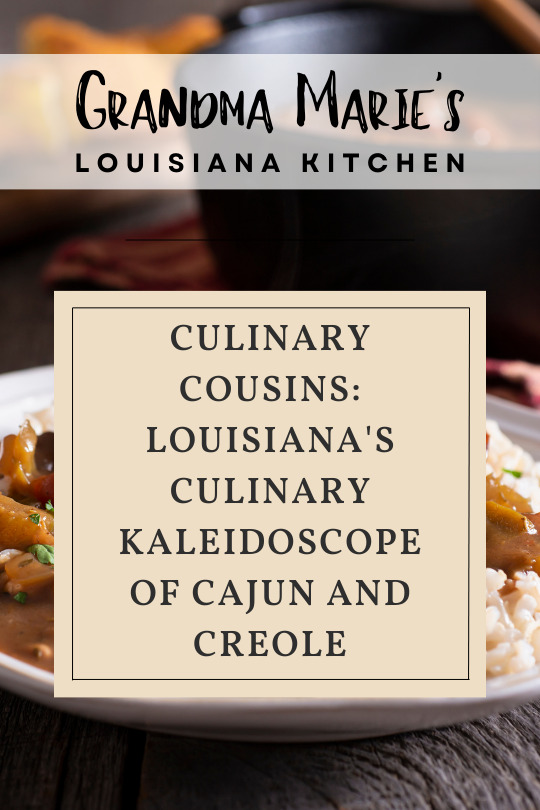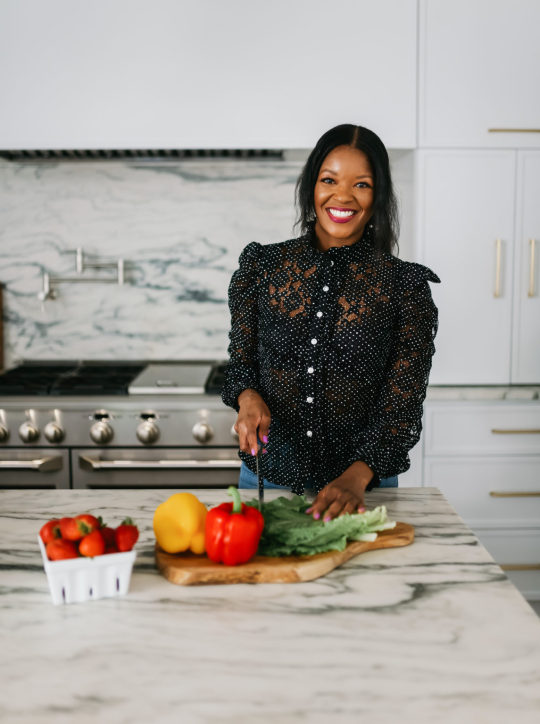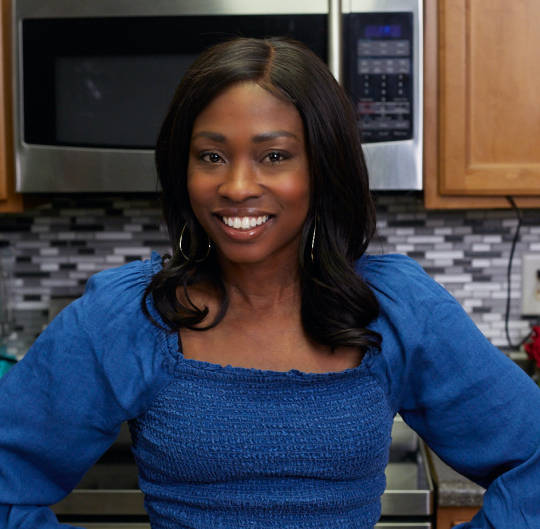#african/caribbean cuisine
Explore tagged Tumblr posts
Text
Caribbean Sorrel Tea

Dried sorrel is steeped with ginger, orange zest, and clove then served over ice in this recipe for a unique tea drink from the Caribbean. 9 ounces dried red sorrel buds, 1 quart water, 1 white clove, 2/3 cup white sugar, 3 strips dried orange zest, 3 teaspoons grated ginger, ice cubes
2 notes
·
View notes
Text
The Caribbean and African Roots of Southern Cuisine
0 notes
Text
Gourmet Global Majority Restaurants in London Worth Trying
#african#Caribbean#cuisine#Featured#fine dining#food#gourmet#list#london#mexican#Michelin#Restaurant
0 notes
Text
MAKE YOUR RESTAURANT POPULAR ACROSS EUROPE
Do you want your restaurant to be popular throughout Europe? Call us now! +32 470 48 20 58.
africadigital.eu
#African cuisine#Ethnic dining#Afro-inspired dishes#Traditional recipes#Authentic flavors#Exotic spices#Cultural dining#Afro-Caribbean food#Continental cuisine#Pan-African dishes#International flavors#Exotic meats#Unique dining experience#Fusion cuisine#African-inspired menu#Global cuisine#Traditional cooking#Gourmet African dishes#Savory delicacies#Specialty restaurant#food
0 notes
Text
2K notes
·
View notes
Text
Headcannon Spices & Cooking & Alcohol Alastor
While Alastor is a cannibal and likes to eat raw venison on occasion, among the Hazbin, he is one of the best (if not the best) at cooking.
Alastor, when he was human, was an incredible cook (he learned from his mother) and in hell, he continued cooking.And one of the things he came to appreciate about his new deer features was his improved sense of smell.
Louisiana Creole cuisine is characterized by its spices and the mix of French, Spanish, Caribbean, African and American influences. It also includes distinctive features of Italian cuisine.
Here you experiment and play with species, There are sweet-salty mixes and , the same dish can vary greatly depending on the mix of species.
Finding substitutes for certain recipes when you can't get illegal imports from Earth (advantage of being an Overlord,), is a little easier with his fine sense of taste and enhanced sense of smell. ( Bell pepper and cayenne pepper could find substitutes but whenever it can it stores its loot of species from Earth)
Here's the thing, being part deer, he came to find that he was now partial to other flavors. Oh, they're not his favorites, but he does indulge in them from time to time. ( Sweet corn, apple and molasses)
Among the first decades in hell, Alastor struggled with this change in his palate but later adapted and sought to incorporate it in his own way. In life, he was part-time moonshiner, Now in hell he also make dark beer and rum, thanks to his newfound appreciation for molasses... ( And a very good one at that! One that Husk gladly drinks every chance he gets and wants to know where the hell Al gets it from.
#alastor#hazbin hotel#alastor the radio demon#hazbin alastor#hazbin hotel alastor#Alastor is a amazing cook#One bite of that food and you might fall in love#Leave the cocktails to Husk#but you need Alastor to find good alcohol#Angel Dust: where do you find that alcohol??!!#Husk: If I knewI wouldn't have lost some of my power! The boss is the only one who knows and the bastard doesn't share!!!!#Alastor: [if the new shipment arrives on time...#Alastor:[some that leg would be good with dark beer.]#Alastor: [but it's been a while since I've had a Café au lait#or Praline]#my headcanons
112 notes
·
View notes
Text
Black, African & Caribbean Food CC! | Black History Month Showcase
Hi all!

Here are my food finds that I want to share with you all. As we are in Black History Month, it's only right to put a spotlight on our culture and celebrate Black history with our pixel people <3 Video below, tune in!
Links to CC:
3 African Food (Seafood Efo, Doro Wat and Injera and Egusi Soup & Fufu): https://jacky93sims.tumblr.com/post/701553381265768448/3-african-food-for-the-sims-2
Maxis Match Egusi Soup and Fufu: https://jacky93sims.tumblr.com/post/719824200762900480/egusi-soup-and-fufu-food-for-the-sims-2
Baby Back Ribs: https://jacky93sims.tumblr.com/post/726293340580085760/baby-back-ribs-porterhouse-molten-lava-cake-and
Jamaican Beef PAtties: https://jacky93sims.tumblr.com/post/741158371697295360/hi-ilenia-can-i-kindly-request-this-jamaican-beef
Ackee Saltfish and Goat Curry: https://jacky93sims.tumblr.com/post/701651797645901824/ackee-saltfish-and-goat-curry-for-the-sims-2
Maxis MAtch Oxtail with Rice and PEas: https://jacky93sims.tumblr.com/post/710719023858548736/corgi-cake-roll-and-oxtail-with-rice-peas-for-the
3 Jamaican Meals (Ox tail, Jerk Chicken, and Beef Patties) https://modthesims.info/d/569355/af-requests-3-3-jamaican-meals-ox-tail-jerk-chicken-and-beef-patties.html
Cajun Cuisine: https://www.thesimsresource.com/downloads/details/category/sims2-sets-food/title/cajun-cuisine/id/736210/
Big shoutout to all the creators including QMBIBI, icemunmun, eris3000, and @jacky93sims here on Tumblr!
youtube
#sims2#sims 2 cc#sims 4t2#sims 2 bacc#sims 2 stories#black sims2#black simmers#urban sims#youtube#sims 2#sims 2 food
266 notes
·
View notes
Text
How to write European characters for Americans (and for everyone else, but especially for Americans):
Rule number one: Europe is a continent, not a country. No, European countries are not like American states. They are all totally autonomous and may be massively different even when they are neighbours. So everything I tell you might not be the case in every country in Europe or not in all parts of all countries!
-not everyone owns a car and many people prefer public transport or bicycles over driving, especially in north western Europe. Places that cannot be reached by foot exist, but are rare.
- Euros are the currency in most countries, but not in all. Im countries poorer than the EU average, Euros might be accepted, too, in richer countries they will not be. Cents and 1€ & 2€ are coins, the rest are notes. The notes don't all have the same sizes! Cash payment is favored in some parts of Europe, card in others. Debit cards are way more common than credit cards!
- Eastern European countries are way poorer than Western European ones. You see a lot of people moving west for work. People from Western Europe hardly ever move to an Eastern European country.
- In Northern and Central Europe, pretty much everyone younger than let's say 70 speaks at least a decent English. Millennials and Zoomers often also speak French or Spanish. In Southern Europe, the younger generations usually speak English, but elderly people are usually monolingual. In Eastern Europe, German and Russian are common second languages, often even more common than English.
- in an elevator, people usually lean against the walls and look into the middle. Standing in the middle and facing the door is uncommon. Unlike in America, you keep your fork always in the same hand and do not move it to the other hand during the meal.
- Northern and Western European countries have got a lot of foreign citizens. South Asians, Africans, Caribbeans and other Europeans are typical in the UK, Arabs and Africans in France, Arabs and Latinos in Spain, Africans in Italy, Turks, Poles, Arabs and Russians in Germany, Arabs and South Asians in the Nordics. Eastern European countries are way whiter and their foreign population mostly consists of people from neighbouring countries.
- some countries prefer their local cuisine, others prefer international food. If a country has got a world-famous cuisine, it probably belongs in the first category, if not in the second.
- With the exception of a few countries (Ireland, Finland and the Baltics), football is the number one sport. Every country has got a national professional league, but especially people from smaller countries often support a team from another country, usually from England or Spain. Women's football is way smaller than in the US and is often ignored or forgotten. Even though each of these has got at least a small fan base in Europe, you cannot expect people to know anything about NBA, NFL, NHL or MLB. Other notable team sports are handball, basketball, ice hockey and rugby, but this depends very much on the country.
- in most countries, sports clubs play a huge role, and school and especially university sports teams hardly exist.
- colleges don't really exist in most countries. If you're going for an academic degree, you'll go to a university, for other careers you'll usually get trained by your company and acquire some kind of diploma. I actually never really understood the difference between a college and a university and so do probably most people here. Studying is not free in every country, but public universities are usually very cheap and under 1000€ per year. Applications for universities are way easier than in the US and usually free. Many people go to university in their hometown. It is not common to move out from home before your early twenties, especially in Southern and Eastern Europe, unless you go studying in a different city. Students live with their parents, in a flat share, with their partner, very rarely alone or in a student's residence. They do NOT share their bedroom with anyone and fraternities or soririties in an American sense do not exist in any country I know.
- Windows can and will be opened frequently. Air conditioning is common only in the Mediterranean and is used to cool down the room, not to let fresh air in. For that purpose, we open the window.
- for distances of a few hours, Europeans either take the car or the train. You can reach every major European city by train, but this doesn't mean the train service is always good. For longer distances, flights are common.
- Germany is always less modern and the Baltics are always more modern than you expect.
- Europeans are just as political as Americans, but every country has got a great variety of different political parties, even though usually 1-3 of them dominate the political landscape. "Liberal" means "center-right" in Europe. Leftists would define themselves as socialists, social-democrats, communists or anarchists. Most countries have at least one conservative AND one extreme right party.
- You can't just fire someone for no reason in most European countries. You'll often have to pay them at least a few monthly salaries as compensation. Every country has got universal health care, though it isn't always good or accessible, and it does NOT depend on your employment. The number of sick days is not limited and even though some countries work even more hours than America, people usually can't be contacted by their employer in their free time.
- the EU is often criticised, but mostly viewed as positive. National laws may not break European law and you see EU flags on many public buildings.
- if someone owns a gun, they are a hunter, a cop, a soldier or a gangster.
- parties start and end way later than in the US. In most countries, no club will close before 3am and you don't arrive at the club before midnight. Sometimes you can party until 8 or even 10 am.
- it is common to cross an international border for shopping if products are cheaper in the other country.
- people are less religious than in America. Even in the most hardcore Catholic or Orthodox regions, you don't see shit like in the US. People there might be frantically kissing some Saint's painting, but they don't believe Jesus died for their right to own a gun or stuff.
Feel free to add some!
#writing#writing advice#how to write#writing tips#tips for writers#how to write Europeans#writers on tumblr#writing help#writing resources#writing characters
33 notes
·
View notes
Text
Such a beautiful site to see river cooking. There are many cultural influences that has its hand in the Caribbean Cuisine, but outside of the African, French, British and Spanish influences take a deeper dive into the actual countries some of these techniques and food that has shaped our Cuisine.
The Philippines has a tremendous influence on our food in Jamaica. Take for instance some commonly used ingredients that both cuisine use include pineapples, coconuts, cassava, tamarind and plantains. Look up the Filipino Cassava Cake and you’ll see what we are talking about!
Cooking in a bamboo to steam fish with coconut jelly!! Whaoyeeee now THAT is a classic!!
🎥 @msangelworld27
26 notes
·
View notes
Text
Culinary Cousins: Louisiana's Culinary Kaleidoscope of Cajun and Creole

Welcome back to our Louisiana kitchen, cher! Let’s delve into a topic close to my heart – the captivating world of Cajun and Creole cuisines. While these two culinary traditions share the same vibrant home, there are nuances that make each one a unique celebration of flavor.
Similarities
Most cousins share some traits and us Cajuns and Creoles? Well, now, we aren’t that different.
Rich Heritage Both Cajun and Creole cuisines are born from the rich cultural tapestry of Louisiana. They intertwine elements from French, Spanish, African, and Native American traditions, creating a delicious mosaic that reflects our diverse history.
Holy Trinity The "Holy Trinity" – a medley of bell peppers, onions, and celery in the heart of both cuisines. This aromatic trio serves as the flavor foundation for many dishes, providing depth and character to Cajun gumbos and Creole étouffées.
Rice Is A Staple Rice is a fundamental component in both Cajun and Creole cooking. Whether it's a bed for gumbo or jambalaya or a side dish, rice ties these culinary traditions together.
Differences
Everyone has their differences, even something as small as ordering a Dr. Pepper instead of a Big Shot. (It happens.)
Geographic Roots One key distinction lies in their geographic roots. Cajun cuisine hails from the rural areas of Louisiana, particularly the Acadiana region, while Creole cuisine originates in the urban centers, primarily New Orleans.
Influences and Ingredients Cajun cuisine often leans towards heartier, rustic fare with influences from the French countryside. Game meats, seafood, and ingredients like andouille sausage are staples. On the other hand, Creole cuisine showcases more refined flavors, often incorporating tomatoes, fine herbs, and a variety of spices.
Cooking Techniques The cooking techniques also set them apart. Due to their rural roots, Cajun dishes are often one-pot wonders simmered to develop robust flavors. In Creole cuisine, you might find more intricate sauces and delicate preparations, showcasing the finesse of French culinary techniques.
Global Influences in Creole Being born in a melting pot like New Orleans, Creole cuisine has been influenced by a broader array of international flavors. Spanish, African, Caribbean, and Italian influences are more pronounced in Creole dishes, offering a diverse and eclectic culinary experience.
In the end, both Cajun and Creole cuisines share a love for bold, flavorful dishes that bring people together. Whether you're simmering a gumbo on the bayou or enjoying a Creole-inspired feast in the heart of New Orleans, you're partaking in the magic of Louisiana's culinary heritage.
Jambalaya: A Culinary Symphony
The iconic Jambalaya is one dish that is beloved by both Cajun and Creole communities. Jambalaya reflects the diverse cultural influences and rich culinary heritage of Louisiana. While there may be variations in the recipes between Cajun and Creole versions, the heart of the dish remains a shared love for bold flavors and hearty, one-pot creations.
Cajun Jambalaya
Ingredients Typically, it includes andouille sausage, chicken, and sometimes game meats like rabbit or alligator. It's seasoned with a robust blend of spices, and the trinity of onions, bell peppers, and celery forms the flavor base.
Cooking Style Cajun jambalaya often features a brown roux for added depth and a rustic, hearty feel. It's a flavorful dish that reflects the down-to-earth, rural roots of Cajun cuisine.
Creole Jambalaya
Ingredients Creole jambalaya may include a mix of proteins like shrimp, ham, and smoked sausage. Tomatoes are a distinguishing feature, giving the dish a slightly reddish hue. The trinity is present, but green bell peppers are more common.
Cooking Style Creole jambalaya tends to have a lighter, tomato-based sauce. The cooking style aligns more with the sophisticated techniques often associated with Creole cuisine.
Despite these variations, the essence of jambalaya as a communal, flavorful dish that brings people together is a shared sentiment in both Cajun and Creole communities.
It truly reflects Louisiana's cultural melting pot, where diverse influences meld into a harmonious culinary symphony.
Whether enjoyed at a family gathering, a festival, or a casual dinner, jambalaya embodies the spirit of Louisiana's love for good food, good company, and good times.
Cajun Jambalaya Recipe
This Jambalaya is a meal that brings folks together, so gather your loved ones and savor the taste of Louisiana's heart and soul.
Ingredients
1 lb andouille sausage, sliced
1 lb boneless, skinless chicken thighs cut into bite-sized pieces
1 large onion, finely chopped
1 bell pepper, diced
3 celery stalks, chopped
3 cloves garlic, minced
1 can (14 oz) diced tomatoes
1 cup long-grain white rice
2 cups chicken broth
2 teaspoons Cajun seasoning (adjust to taste)
1 teaspoon dried thyme
1 teaspoon dried oregano
Salt and black pepper to taste
Green onions, chopped, for garnish
Fresh parsley, chopped, for garnish
Instructions
Prepare Ingredients
Slice the andouille sausage.
Cut chicken thighs into bite-sized pieces.
Chop onion, bell pepper, celery, garlic, green onions, and parsley.
Sear Meats
In a large, heavy pot or Dutch oven, sear the andouille sausage over medium-high heat until browned. Remove and set aside.
In the same pot, add the chicken pieces and brown them on all sides. Remove and set aside.
Sauté Vegetables
In the same pot, add a bit of oil if needed. Sauté the onion, bell pepper, celery, and garlic until softened.
Build Flavors
Stir in the diced tomatoes and cook for a few minutes.
Add Cajun seasoning, dried thyme, and dried oregano. Season with salt and black pepper to taste.
Combine Ingredients
Return the seared andouille sausage and chicken to the pot.
Add the rice and stir to coat the rice with the flavorful mixture.
Simmer
Pour in the chicken broth and bring the mixture to a boil.
Reduce heat to low, cover the pot, and let it simmer for 20-25 minutes or until the rice is cooked and has absorbed the liquid. Stir occasionally to prevent sticking.
Serve
Once the rice is tender, remove the pot from heat.
Garnish with chopped green onions and fresh parsley.
Enjoy
Serve hot, and enjoy the flavorful goodness of Cajun Jambalaya!
Nutritional Information
(Per Serving, Assuming 6 Servings)
Remember that the nutritional values are approximate and can vary based on specific ingredients and portion sizes. The values provided are for one serving of Cajun Jambalaya, assuming the recipe makes approximately six servings.
Calories: Approximately 450-500 calories
Total Fat: 20-25g
Saturated Fat: 7-9g
Trans Fat: 0g
Cholesterol: 80-90mg
Sodium: 1200-1400mg
Total Carbohydrates: 35-40g
Dietary Fiber: 2-3g
Sugars: 3-4g
Protein: 20-25g
Note
The nutritional values can vary based on the specific brands and types of andouille sausage, chicken, rice, and other ingredients used.
Adjustments, such as using leaner sausage or brown rice, can impact the nutritional content.
For precise nutritional information, especially if you have specific dietary considerations, it's advisable to use a nutrition calculator with the exact brands and quantities of ingredients you use.
Until next time, I wish you warmth and flavor!
#grandmamarie#grandmamaries#grandmamarieslouisianakitchen#cajun#creole#cooking#recipe#recipes#culture#history#heritage#jambalaya#jambalaya recipe
17 notes
·
View notes
Text
This is actually just a rant I left in someone's replies when I saw someone complaining about British people not seasoning their food. Like yes I get it, it's funny to say like "why did you steal all those spices if you weren't going to use them" but like, this is mostly a criticism I see from people who don't live here and I thought a fuller picture might interest people.
Sooooo, something to note about food in the UK. We do have good food here but most of it is imported cuisine, and the best of the foreign foods we have tend to be from those cultures that we have significant populations of, for example Caribbean, North African and Indian. So we have shit Latin food mostly because we have no significant Latin population. As for British food itself, well old recipe books from the 19th century and before weren't very good, they didn't give specific quantities and made references to things that were taken for granted at the time but that we no longer have context for. Additionally it wasn't the food of the average citizen that was being recorded but that of the higher ups and back then the food of the upper classes was heavily inspired by french cuisine. So in comes the 20th century and 2 world wars. A lot of British food culture gets essentially destroyed by rationing and you have a whole generation that grow up learning how to make do during a period where we weren't getting all the spices that we stole from everywhere else. And what they were taught out of necessity they taught their kids out of convenience, or laziness or tradition, take your pic I guess. That combined with successive media frenzies over the decades; going on and on about the dangers of salt and sugar and saturated fats and MSG and basically anything you can think of that makes food taste good. That has combined to create multiple generations of people that see bland food as an almost moral good. It's good to be frugal, you never know when rationing is going to happen again, it's good to eat healthy even if it's miserable and unappetising. Younger generations here have grown up in a world where our parents food often sucks. (At least this is true of a lot of white British people). Most white British people I know don't have a nostalgic feeling about their parents cooking. Like I was always confused growing up by the media trope of food made "just like [insert family member here] used to make". Because why would you want that?? As a result of this there is a push against this trend in the younger generations. I personally would call myself a good cook, I branch out a lot and have learnt from cuisine all over the world. One of the greatest things about the internet in my opinion is the ease of transmission of food culture, because dear god do we desperately need that here. But the thing is the young generation are largely quite poor in comparison to our elders. This means we eat out less and order takeaway less and thus our tastes, our relatively new found appreciation of good food is not reflected in the hospitality industry. Restaurants cater to the middle classes, who still insist on low fat everything with no salt and always double check how spicy something is before ordering. So yeah, this is why it's hard to get good food here. It does exist, and it's getting better, but like yeah it's sure taking its time.
Also at the very least you got to give it to us, the thing we stole the most of was pepper and we put that shit on literally everything.
3 notes
·
View notes
Text
Thess vs Food Stereotypes
Okay, really getting tired of this.
I didn’t want to hijack the post doing the rounds about “British kids try biscuits and gravy for the first time” and people getting judgemental about British cooking based on a few kids whose idea of ‘biscuit’ is very different than the American version and one British uni student’s aversion to spice. Thing is, though ... I live here, and I moved here from Canada (Montreal, even, which has a reputation for being as foodie as Paris but with a lot more politeness) by way of the United States. I’ve seen the stereotypes from all three countries, and when it comes to England, I’ve been everywhere from tiny hamlets to ... well, London, where I currently reside.
A lot of “traditional dishes” lack for spice here, true. However ... did y’all forget, while you were going, “American versions of recipes from other places have such flavour because poor / low class immigrants brought the recipes here”, that Britain was a fucking empire? We bitch about British colonialism all the time, and fair enough, but no one seems to have considered the huge variety of food that brought to this tiny wet little island. Even in the tiniest hamlets you’ll generally find an Indian takeaway, always family-run, always by families who came from the country from which the cuisine originated, some as recently as a generation ago. Bigger cities, and especially someplace like London? You’ll find a lot more. Hell, I live near an area that’s a blend of Afro-Caribbean, Nigerian, and Filipino, and the food you’ll find in the area reflects that. And I don’t just mean restaurants either; people who live here are clearly making that stuff at home, if the local markets are any indication. It’s the same all over, with a lot of emphasis on Indian, Pakistani, Nepalese, Filipino, and the foods of various African nations. Britain colonised these countries, and maybe the white people don’t make as much use of the spices they got by doing so as they could? But some do.
Also ... dude, they have herbs here. And they use them. Stews are full of thyme and sage and bay leaf. Sauces are a thing - mint for lamb, applesauce (not the sweet dessert kind; the kind where the tartness of the apple is maintained) for pork, fucking horseradish for beef. Root vegetables like parsnips and carrots are often roasted in a honey glaze, and never underestimate how a flavour profile changes if you change what fat you’re using for roasting a potato. (Seriously, just try roasting potatoes in goose fat.) Gravy? They have gravy; not as thick, and more generally devoted to the flavours of the juices of the roast, but they have gravy.
Britain has a different, earthier, occasionally sweeter flavour profile to a lot of its traditional dishes than other countries, yes. And there are a lot of people in this country who fear anything more than one clove of garlic, yes. However, there are Americans who fear anything that doesn’t taste of grease and mayonnaise, too (which is the stereotype, I’m afraid). So maybe can we lean less into the stereotype and, while trying unfamiliar foods, also do some research and try a variety of those unfamiliar foods instead of judging an entire country’s palate based on a couple of school kids who don’t know the American South’s version of a biscuit? Just be happy they’re loving it.
And go try some bubble and squeak sometime. Lancashire hot pot. Cornish pasty. Cullen skink. Hell, shepherd’s pie! It’s not all boiled everything, y’know.
43 notes
·
View notes
Text

#African cuisine#Ethnic dining#Afro-inspired dishes#Traditional recipes#Authentic flavors#Exotic spices#Cultural dining#Afro-Caribbean food#Continental cuisine#Pan-African dishes#International flavors#Exotic meats#Unique dining experience#Fusion cuisine#African-inspired menu#Global cuisine#Traditional cooking#Gourmet African dishes#Savory delicacies#Specialty restaurant#Cosmetics African African beauty products#Ethnic skincare#Afro-centric cosmetics#Natural hair care#Traditional beauty remedies#Ethnic makeup brands#Afro-textured hair products#Herbal skincare#African-inspired cosmetics#Cultural beauty products
1 note
·
View note
Note
Questions for your upcoming vid:
What's your ethnicity? How connected are you to your heritage?
In your travels, have you been to Africa at all? If so, where? If not, would you like to go, & where?
What's your height?
What zodiac signs do you feel you are most compatible with (romantically or platonically?
Are you a fan of any sports?
Marvel or DC (& why)?
What's your fave cuisine?
You mentioned the genres of music you like... Any interest in Caribbean and/or African music?
Any pets? If not, what animals do you like?
Tell us a funny joke!! 😁
Oh I love these questions! Do you really want me to do a 2nd Q&A?
7 notes
·
View notes
Text
Welcome to Black People’s Recipes!
Here you will find an assortment of Black cultural recipes for dinner, dessert, appetizers, side dishes, drinks, vegan meals, and more. Our recipes highlight the staple dishes found within African American, African, and Caribbean communities. We pride ourselves in sharing our family-favorite recipes that are prepared the right way and true to historical traditions.

Brandi Crawford is a cookbook author and the owner of Stay Snatched and Simple Seafood Recipes. She specializes in quick and easy meals for dinner along with Southern and soul food cuisine. Brandi loves to share recipes that are easy to follow that never compromise on taste. She grew up cooking alongside her mom and granny throughout her entire childhood and early years.
Brandi and Stay Snatched have been featured in Women’s Health Magazine, Shape Magazine, Parade Magazine, Essence Magazine, Country Living Magazine, Southern Living Magazine, BuzzFeed, Delish, The Kansas City Star, Kansas City Spaces, Greatist, and more.
She is the author of The Super Easy Air Fryer Cookbook and has been featured on Good Morning America, where she shared tips on how to live a healthy lifestyle that is sustainable and tips on meal prepping.

Meet Jessica from Jessica in the Kitchen, a vegan food blog. Jessica is an award-winning photographer, videographer, and home chef! She has been cooking and blogging for the last 12 years and without a doubt, she LOVES cooking. She focuses on simple, approachable, and SEASONED vegan meals and will be sharing all of her favorites with you here.
Fun Fact: She is a born and raised Jamaican and also grew up in the British Virgin Islands (also in the Caribbean) and will be throwing her favorite cultural dishes into the mix, too. Her mixed Caribbean upbringing heavily influences her love of well seasoned, bright, and fresh dishes. On the baking side, she comes from a family of caterers and bakers. She can’t wait to share that side with you too, in her baked goods!

Tanya Harris is the founder and owner of My Forking Life, a food site where she focuses on sharing easy and flavorful recipes with a heavy focus on Caribbean and Southern cuisine. Tanya grew up in a Caribbean household and lived in various cities in the Southern United States.
Tanya’s obsession with cooking developed later in life when she wanted her growing family to experience all the delicious meals she ate growing up. Now Tanya shares this same experience with her loyal followers and fans.
Fun Fact: Tanya is an avid cookbook collector and owns over 200 cookbooks! She likes to browse these books in her free time for inspiration on new recipes and ideas.

Jocelyn Delk Adams is the founder, author, and national television personality behind the food website Grandbaby-Cakes.com which serves millions of readers per year. On Grandbaby Cakes she gives her family’s, particularly her grandmother’s, cherished generational recipes her modern spin while preserving their original charm and spirit.
Jocelyn is a regular on the TODAY Show and Good Morning America, and has been featured as a judge on Food Network shows “Beat Bobby Flay” and “Santa’s Baking Blizzard” and Disney Channel and Disney Plus “Disney Magic Bake Off”, and in publications such as People Magazine, Food and Wine Magazine, Parents Magazine, New York Times, Washington Post, Better Homes and Gardens Magazine, O (The Oprah) Magazine, Essence Magazine, Huffington Post, Bon Appetit, Southern Living Magazine, and many others.

Shannon Epstein aka Fit Slow Cooker Queen is a home cook & recipe developer living in Los Angeles. Shannon is a gadget cook who specializes in slow cooker, Instant Pot, and air fryer recipes.
Fun fact: Shannon moved 9 times before she graduated high school.

Davinah from Dr. Davinah’s Eats is a former educator turned full-time foodie & entrepreneur. She came to blogging by accident after remaking comfort food recipes to fit a low-carb way of eating on Instagram. Her seared scallops and cauliflower rice risotto, crispy fried air fryer chicken without flour, and keto bang bang shrimp went viral and the blog became her way to store and share her recipes.
Her main website focuses on everyday low-carb comfort food and air fryer recipes for foodies. Black People’s Recipes allows her to go back to where her love for food started – making traditional recipes with her mom and other women in her family.
Besides being a foodie, Davinah is a trained data scientist, real estate investor, new mom, and wife. She loves organizing her life in excel sheets and solving random math problems.
Fun fact: feeling adventurous, she climbed the Coba Pyramid (137 feet) in Mexico, but was too scared to come back down. So, she scooted one step at a time back to the ground!
#Welcome to Black People’s Recipes#Black Food#Black Cooking#Black People Cooking#Black People's Recipes
12 notes
·
View notes
Note
I'm not a ds9 writer but I've always been curious about the origins and development of southern cuisine so here's your invitation to infodump about it
HIIIIIIIIIIIIIIIIII
So to start off, I will be referring to Louisiana Creole as just Creole, but it should be noted that there are other Creole cuisines!
So, Creole and Cajun foods are really really similar. They’re like sisters to me. They share the a lot of same French, Spanish, Black, and Native influences, (and in fact you could argue that Cajun is a really specific type of Creole food derived from the cuisine of the descendants of the Acadian people) albeit with slight differences.
Cajun food is heavily influenced by French and Southern cuisine, and is very meat heavy. Lots of pork (ESPECIALLY in sausage form) and chicken, usually in one pot dishes paired with rice. It’s also a lot spicier usually. Crawfish and crawfish boils are also distinctly Cajun.
Creole is a real metropolitan cuisine, with Italian, German, and even Caribbean influences. It developed in New Orleans specifically, and features a lot of seafood, usually locally caught. There’s also a lot of tomatoes. Like a lot of tomato.
There’s a lot of crossover, like gumbo for instance. Creole gumbo tends to be more seafood based and uses okra as an additional thickening agent
It should really be noted that you cannot ignore the influences of enslaved Black people on either cuisine, but Creole food especially. Okra is an African vegetable!
With all of that being said, I find it really disappointing that the foods they mention in Star Trek (jambalaya, boudin, crawfish, etc.) are all….Cajun. Those are Cajun dishes. Like a lot of Creole restaurants in New Orleans have Cajun dishes on the menu but there’s nothing Creole about Sisko’s Creole Kitchen!
23 notes
·
View notes